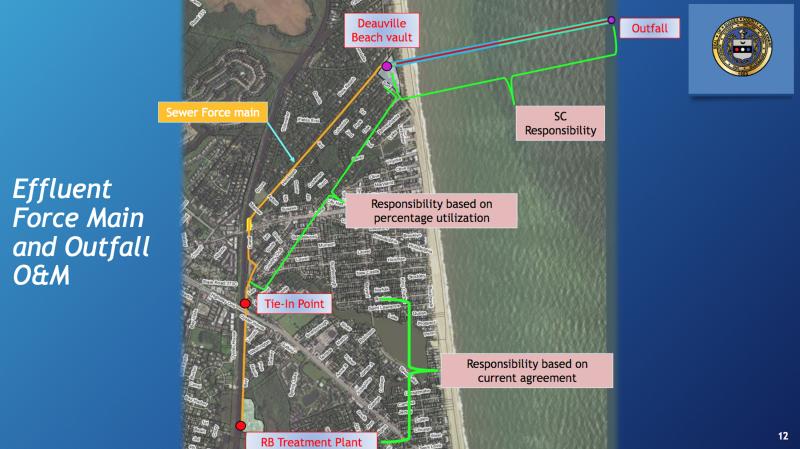Rehoboth offers timeline to answer on regional wastewater question
Officials from Sussex County and the Lewes Board of Public Works continued to make a case for a regional wastewater partnership with Rehoboth Beach during a commissioner workshop Oct. 7. No decisions were made, but Rehoboth officials said they should have an answer by the end of the year.
A few months ago, county and BPW officials approached Rehoboth about the creation of a regional wastewater partnership. Lewes needs a new wastewater treatment facility, and after years of analysis, a consensus was reached that the best plan moving forward would be for the county to expand its Wolfe Neck facility. The question the county and BPW officials would like answered is whether Rehoboth officials are willing to allow them to hook into the city’s ocean outfall pipe and use the pipe's excess capacity. The much-less-desirable alternative, Sussex County Administrator Todd Lawson and Lewes BPW President Tom Panetta have said, is the construction of a second outfall.
More recently, during a meeting in early September, Lawson said the county was offering a one-time payment of $20 million, and future operation and maintenance costs. In return, the county would like the ability to pump up to 5 million gallons per day through the outfall.
During the recent commissioner workshop, Mayor Stan Mills said the consultant hired by the city to evaluate the proposal will make a presentation during the commissioner workshop Monday, Nov. 4. Following that presentation, he said, city management – City Manager Taylour Tedder, Assistant City Manager Evan Mills, Public Works Director Henry Matlosz, former Public Works Director Kevin Williams – will meet with the consultant and make their recommendation to commissioners during their meeting Friday, Nov. 15.
Not much changed in the pitch by county and BPW officials from the meeting in September.
Lawson said the quality of the effluent discharged by the new plant will meet or exceed what the Rehoboth facility is currently pumping out. Looking to the future, he said, the new plant will use the same technology as the Rehoboth plant, but will also be built with future standards in mind, such as carbon filtration.
The Wolfe Neck facility will be built to account for carbon filtration in the future, which will make it much easier to adapt than any of the other treatment facilities within the county, said Lawson.
Commissioner Suzanne Goode said she’s concerned the county would have the ability to start pumping effluent from other parts of the county if the city participated in the partnership.
Showing a map of the areas the county currently services, Lawson said the waste produced by customers south of Love Creek is primarily sent to the county’s Inland Bays facility in Millsboro. He said the county could pump some of that water toward Rehoboth, but the infrastructure couldn’t handle all of the water from the Inland Bays facility.
Additionally, said Lawson, the Inland Bays facility is actively undergoing an upgrade to be able to handle the needs of customers for the next 25 years.
In light of recent archaeological finds on state land adjacent to the county’s existing treatment facility, Goode asked if a new treatment plant can be built in the footprint of a storage lagoon at the Wolfe Neck facility.
Lawson said yes.



















































